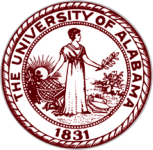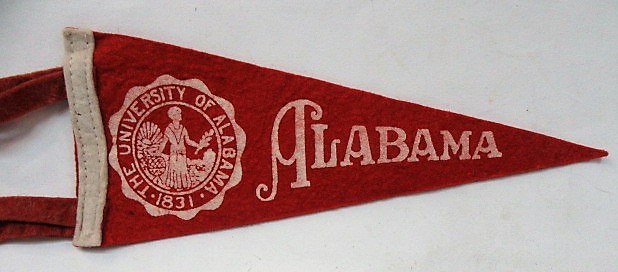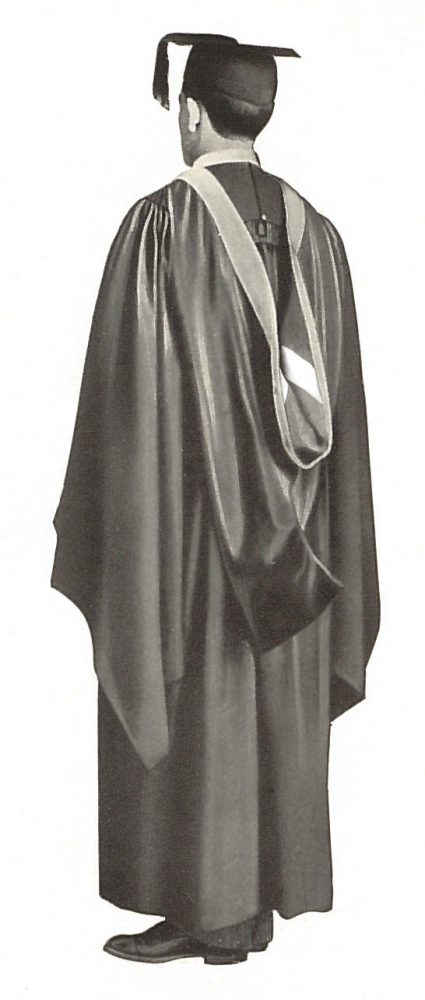University of Alabama
Alabama
1831




Mary Fearn, the daughter of the US ambassador to Greece and the sponsor of the University of Alabama’s Company E military cadet corps, suggested that the cadets use crimson, gray, and white as their unit colors in 1885. Students began wearing crimson and white to athletic events, especially after football began to be played at Alabama in 1892, but gray never caught on. Despite their popularity with students, crimson and white were never officially selected by university students as their school colors, but Alabama’s sports teams are known as the “Crimson Tide”.


Citations in the World Almanac (listed by cover date; color information is from the previous year): crimson/white (1895-1935)
Although it may have been assigned earlier, the academic hood lining design for the University of Alabama was first cited in a 1918 Encyclopedia Americana article on academic costume written by Gardner Cotrell Leonard, the Director of the Intercollegiate Bureau of Academic Costume (IBAC). Leonard stated that the university had been assigned a hood lining that was “Oxford crimson” with a white chevron. It is not clear how “Oxford crimson” was different from “crimson”, so this adjective seems to have been a naked attempt by the IBAC to disguise the fact that Alabama’s hood lining was in fact identical to the hood lining of Radcliffe College (crimson with a white chevron) on the same list. By 1948 the Bureau had dropped this pretense and was simply describing Alabama’s hood lining as “crimson” with a white chevron, a description that did not change in IBAC materials thereafter.
Radcliffe College officially became a part of Harvard University in 1999, which resolved the duplicate hood lining pattern problem with the University of Alabama, but there was another wrinkle in the Intercollegiate Bureau’s hood lining assignment for these institutions. Radcliffe’s and Alabama’s hood linings (both crimson with a white chevron) were very difficult to distinguish from the hood lining the IBAC had earlier assigned to Dickinson College (cardinal with a white chevron).
To resolve this problem, here Alabama’s hood has been redesigned with an inverted (or “reversed”) chevron, a heraldic division the Bureau was using by the mid 1920s to resolve duplications of this sort. In fact, Northern Baptist Theological Seminary had been assigned a cardinal hood lining with a reversed white chevron by 1927, but after the seminary made its shade of red more vibrant in the 1950s the IBAC reassigned Northern Baptist a bright red hood lining with two reversed white chevrons.